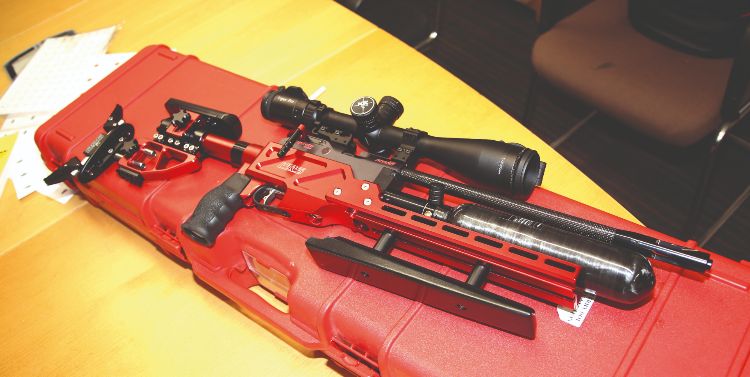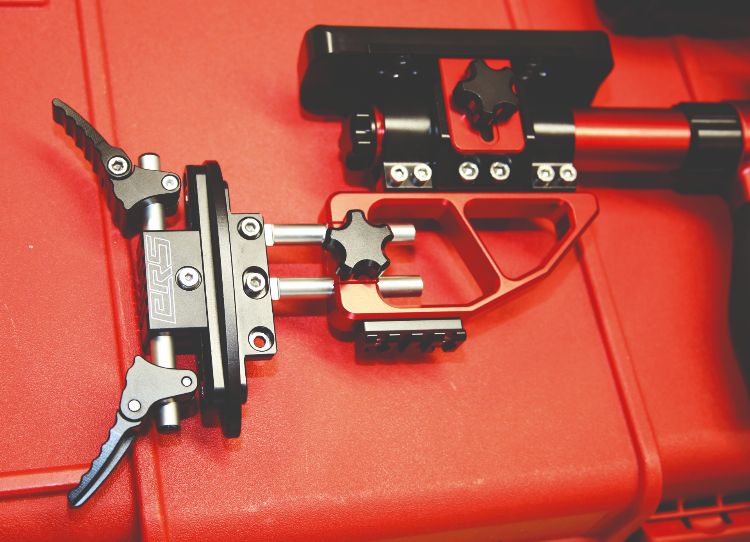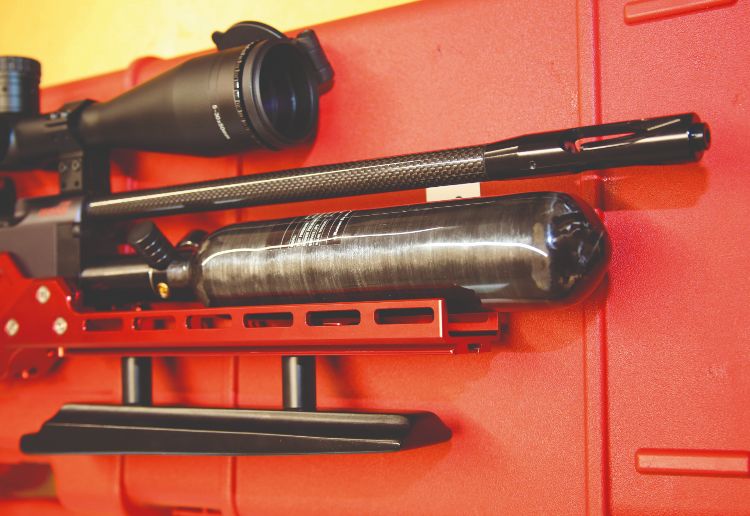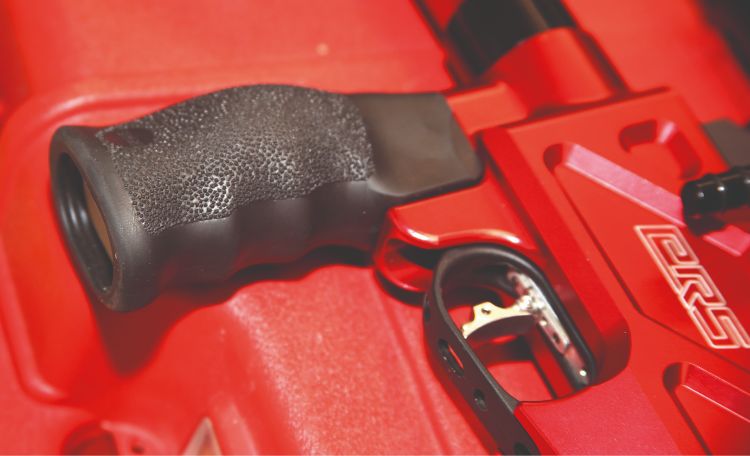Of the many benefits and bonuses I’ve enjoyed over the years, possibly the greatest of them has been getting to know the priceless people who helped create the airgun world in which we all live. Within that process, I’ve also been privileged to test and explore the airguns those unfairly clever people designed, made and seriously refined for their own use. Few could fully realise what a genuine privilege this is, because not only did I get to shoot and study every feature and facet of these remarkable, often ground-breaking, rifles, but I was also able to listen to their creators explain the processes, thought and practical, behind them.
Every one of these rifles is individual, because the same applies to those who made them, but a common thread runs through them all. They have all been no compromise projects, untouched by the constraints of deadlines, profit, and the need for making them suitable for mass production. The rifles I borrowed from the likes of Ken Turner, Mick Dawes, Dave Welham, and John Whiscombe, were indulgent one-offs, that were tweaked and tuned to an impractical level, and their creators knew that. I strongly suspect that part of the pleasure these giants of our sport found in their own guns, was the fact that none of the usual production rules applied to them, and of course, that’s perfectly understandable.
MEET GAVYN JONES
My latest privilege of this kind came at this year’s British Shooting Show, when Tony Belas of Daystate introduced me to Gavyn Jones, the man behind Precision Rifle Systems, the company that supplies an amazing range of hardware options for the Daystate range.
Gavyn is the kind of chap who puts a technical ignoramus like me completely at ease, via simple descriptions of complicated processes, and the benefits these bring to the real world of shooting more efficiently. He knows inside out the cutting-edge design and manufacturing technology that creates his products, and he can modify every stage of their required applications, but through it all, Gavyn’s a shooter, and he knows what shooters want and need.
PRS hardware does the job to the highest standards, and looks good doing that. Gavyn never underestimates the value of aesthetics, as once glance of the rifle in this feature will confirm.
 THE RIFLE I’VE BEEN SHOOTING
THE RIFLE I’VE BEEN SHOOTING
Gavyn’s rifle, used mainly for HFT, I’m told, is a flawless study in metallic red, with gleaming highlights beaming at every fixture, courtesy of dozens of shiny, stainless steel bolts. Contrast is supplied via various silky black fittings, with the greys of the carbon-fibre barrel shroud and action block, easing the eye between the shiny stuff.
The combined effect is stunning, and every time I lifted the lid of the rifle case, the sight of what Gavyn has built drew gasps and exclamations from all who saw it. Then, those assembled would invariably bend forward, their eyes darting from feature to feature, with further positive comments breaking the respectful silence.
The nearest I heard to a negative was, ‘now THAT will cost a bloody fortune!’, and that particular observation was entirely correct, especially if Gavyn applied commercial rates to his time and the cost of production. As I’ve said, these ‘personal’ rifles don’t follow normal rules, but Gavyn’s is a little different, because, although it was built purely because it was what he wanted in a rifle for himself, it’s become the blueprint for Daystate’s new Grand Prix competition gun.
THE GRAND PRIX IS ON ITS WAY
Apart from a couple of pre-production prototypes, currently on the U.S. match circuit, there isn’t a full production Daystate Grand Prix available, yet. Producing such a highly technical rifle is a massively complex project, and until every aspect of every feature and component is in place and performing to the expected standard, no new rifle can roll off a production line.
I asked Tony Belas when the Grand Prix will be available, and without hesitation, he replied, ‘when it’s ready.’ I’ve been promised the first one, and as soon as that arrives, I’ll do a comprehensive test on it. Meanwhile, let’s get a feel for what’s to come by closely examining Gavyn’s rifle.
 A NON-BASIC OVERVIEW
A NON-BASIC OVERVIEW
First, there’s nothing ‘basic’ about this rifle, and that’s why a ‘basic overview’ won’t work. What I’m looking at is a Daystate Red Wolf electronic action, in a full-spec, PRS anodised aluminium stock. Not a scrap of timber to be seen, with just the synthetic, drop-down pistol grip as the rifle’s standalone non-metal component. Gavyn told me that his rifle’s action is the gen 1 Rosso, with the same updated firmware that the latest generation rifles. Then he told me something I could actually understand.
DOUBLE-REGULATED PERFORMANCE
This particular rifle has a mechanical regulator in addition to the electronic regulation carried out by the rifle’s action. Naturally, I asked Gavyn why he’d gone with such a ‘belt ‘n’ braces’ approach, and again, he realised who he was talking to, and powered down the explanation.
Gavin is a shooter, and a competitive one so, he wants every advantage possible, and that twin-reg’ system gives him just that.
If the mechanical regulator ‘creeps’ or fails altogether, the rifle’s electronics will compensate for this, and keep those shots blipping out consistently. Knowing this, is an undoubted advantage, especially when you know that your rivals for silverware don’t have such a built in insurance policy. For the record, the mechanical regulator is housed in the connection tube between the rifle’s 300cc carbon-fibre air tank and its action, and Gavyn’s rifle produces around 300 shots from a 200 bar charge, at 11.6 ft.lbs. in .177.
 ADJUSTABLE EVERYTHING!
ADJUSTABLE EVERYTHING!
As you’d expect, there’s a huge degree of adjustability available with this rifle, and I had all sorts of noble intentions of delivering the full list to you, but I ran out of page space less than half-way through. Frankly, the best way to assess the degree of adjustment on offer here, is to study the photos, and the functions should become fairly obvious. Don’t forget that, in addition to the myriad tweaks offered by the butt assembly and cheekpiece, there are more to be found on that oversize hamster, and even in the air-stripper and scope mounts.
These three components weren’t made by Gavyn, actually. The hamster comes from renowned stock maker, Mark Sanderson, the air-stripper is one of Rowan Engineering’s, and I think the ‘reach-back’ mount is from the MTC Optics range. Oh, and of course there’s the Red Wolf trigger mechanism, which Gavyn has set to, shall we say ‘fine’. Way too light for me, but then I’m not the equivalent of an airgun brain surgeon.
SEE THE UNSEEN
Certain credible features aren’t so obvious to the casual observer, so let’s highlight those now. The battery that powers the rifle lives in the tube on which the cheekpiece and butt section is mounted. This tube is sealed by a large ‘stopper’, complete with ‘O’ rings, and the battery is connected to the rifle’s action by a plug-in lead. It’s a simple, yet brilliant, feature, and it typifies the whole rifle.
Next, for pure cuteness, the compact, short-throw cocking lever is one of the stars of the show. With no conventional hammer spring to compress, the cocking lever on an electronic airgun has very little work to do, so minimal required effort has given us a very much abbreviated component – everyone loves a short-throw cocking lever.
Finally, the most significant feature of all can’t be fully appreciated, until you have the rifle in your hands, and you can examine it forensically. The sheer quality of manufacture and finish of this rifle is truly staggering. I know we’re used to high quality from those who offer us superguns, but what Gavyn does at PRS is jaw-droppingly impressive. Fit, finish, and function, of the highest standard, no doubt about it.
 WILL THE PRODUCTION RIFLE BE IDENTICAL?
WILL THE PRODUCTION RIFLE BE IDENTICAL?
In a word, no. From what I can gather, the Daystate Grand Prix will have an integrated trigger guard and a different air-stripper. Gavyn will be fitting his own stripper to his rifle, as soon as I run out of excuses for keeping it, and get it back to him. The grip and hamster are also under review, as far as I know. No doubt there will be other tweaks, too, because production rifles aren’t often used and maintained by shooters with Gavyn’s degree of technical smarts, so the guns need to run without such input and monitoring. That said, I absolutely guarantee that the production Grand Prix will be able to reproduce the one-hole groups I, and others, stamped out with Gavyn’s rifle.
VERDICT
Yes, as my mate remarked when he first saw what you’re looking at, here, the new Grand Prix won’t be cheap, mainly because it will be extremely expensive to produce. Even with a projected RRP of around £3,500, this rifle will definitely sell, because people always want what they believe is the best that money can buy. Having had the privilege of shooting Gavyn Jones’ no-compromise, super-high-quality supergun, I can confirm that it’s right up there with the finest examples of air-powered technology I’ve ever used.
PROVISIONAL SPECS - ALL SUBJECT TO CHANGE
PRS GRAND PRIX
Made by: Precision Rifle Systems / Daystate
Type: Pre-charged, fully-adjustable, competition rifle
Country of origin: England
Calibre: .22, .177 and others to be decided
Cocking/loading: Sidelever
Pellet loading: Via single-shot tray
Trigger: 2-stage, multi-adjustable match design, with manual resettable safety
Stock Type: Anodised aluminium, multi-adjustable
Weight: 5kg (11.1lbs)
Length: 939mm (37ins)
Barrel: 350mm (13.7ins) Lothar Walther, 16mm, fully floating
Fill pressure: 232 bar max
Shots per charge: approx. 250 in .22, 200 in .177, at sub-12 ft.lbs. configuration
Muzzle energy: 11.6 ft.lbs
RRP: Approx. £3,500